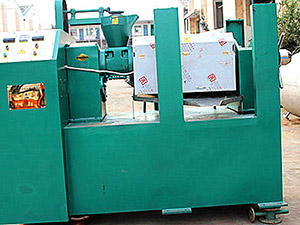A soybean oil processing plant is a facility designed to extract and refine oil from soybean seeds. The plant involves a series of processes that convert soybeans into crude or refined soybean oil, along with valuable by-products like soybean meal. The extracted oil is widely used for cooking, in processed foods, and in non-food applications such as biodiesel, while soybean meal is used as a protein-rich feed for livestock.
Key Processes in a Soybean Oil Processing Plant
1. Cleaning and Dehulling:
- Cleaning: Soybeans are cleaned to remove foreign materials such as dust, stones, and other impurities.
- Dehulling: The cleaned soybeans are dehulled to remove their outer skins. The hulls can be used as animal feed or in other industries.
2. Crushing and Conditioning:
- Crushing: The dehulled soybeans are crushed into small flakes to increase the surface area for oil extraction.
- Conditioning: The soybean flakes are heated to around 60-80°C (140-176°F) to help rupture the oil cells, making it easier to extract the oil. This step also improves the efficiency of the extraction process.
3. Oil Extraction:
- Mechanical Pressing (Expeller Pressing): This process uses a mechanical oil press to squeeze the oil from the soybean flakes. It is suitable for small and medium-scale production but leaves about 5-8% oil in the residual cake.
- Solvent Extraction: For large-scale processing, solvent extraction is used, where the soybean flakes are treated with a solvent like hexane. This method extracts up to 99% of the oil from the soybeans, leaving only 1-2% residual oil in the meal.
4. Desolventizing and Toasting:
- In solvent extraction plants, the solvent is removed from the extracted soybean meal in a desolventizer-toaster, leaving oil-free meal ready for use in animal feed.
5. Crude Oil Filtration:
- The extracted crude oil, whether from mechanical or solvent extraction, contains impurities such as phospholipids, free fatty acids, and pigments. A filtration system is used to remove solid particles and prepare the crude oil for further refining.
6. Oil Refining (Optional):
- Degumming: Removes phospholipids from the crude oil.
- Neutralization: Removes free fatty acids to reduce acidity.
- Bleaching: Removes pigments, such as carotenoids and chlorophyll, to improve oil color.
- Deodorization: Removes unpleasant odors and tastes, making the oil suitable for consumption.
- The end product is refined soybean oil that meets food industry standards for color, flavor, and purity.
7. Packaging and Storage:
- The final product is either stored in bulk or packaged in bottles for retail markets. It is crucial to store the oil in a cool, dry place to prevent oxidation and spoilage.
Components of a Soybean Oil Processing Plant
1. Cleaning Machine: Removes impurities from raw soybeans.
2. Dehulling Machine: Removes the hulls from soybeans to improve oil quality.
3. Crushing Machine: Crushes soybeans into small flakes for easier oil extraction.
4. Conditioner/Cooking Machine: Prepares soybeans by heating them before extraction.
5. Oil Press Machine: Used in mechanical extraction to squeeze out oil from soybean flakes.
6. Solvent Extractor: Used in large-scale plants to extract maximum oil using hexane.
7. Desolventizer: Removes solvent from the extracted soybean meal, making it safe for animal feed.
8. Oil Filtration Equipment: Filters the extracted crude oil to remove solid impurities.
9. Refining Unit: Processes crude oil into refined, edible soybean oil through degumming, neutralization, bleaching, and deodorization.
Advantages of a Soybean Oil Processing Plant
1. High Oil Yield:
- Solvent extraction methods allow for nearly complete extraction of oil from soybeans, increasing profitability by maximizing the output of usable oil.
2. Multiple By-products:
- Besides soybean oil, the plant produces soybean meal, which is a highly valuable by-product used in animal feed production, adding another revenue stream for the plant.
3. Scalable Production:
- Soybean oil processing plants come in various capacities, allowing for scalable production from small plants to large industrial facilities.
4. Versatility:
- In addition to soybean oil, many processing plants can handle other oilseeds such as peanuts, sunflower seeds, and rapeseeds with slight modifications in the machinery.
5. Refined and Crude Oil Options:
- The plant can produce crude soybean oil for industrial uses (like biodiesel) or refined oil for food consumption, giving it flexibility in addressing different markets.
6. Energy Efficiency:
- Modern plants are designed with energy-saving technologies that reduce operational costs, making the process more efficient.
Applications of a Soybean Oil Processing Plant
1. Food Industry:
- Soybean oil is widely used in cooking, frying, baking, and salad dressing. It is also a common ingredient in processed foods like margarine, sauces, and baked goods.
2. Biodiesel Production:
- Soybean oil is a major feedstock for biodiesel production, an environmentally friendly alternative to fossil fuels. The extracted oil can be processed into biodiesel in specialized facilities.
3. Cosmetics and Personal Care:
- Soybean oil is used in the production of soaps, lotions, and other cosmetic products due to its moisturizing properties and high vitamin E content.
4. Animal Feed Industry:
- The soybean meal produced as a by-product of oil extraction is a protein-rich ingredient in animal feed for poultry, cattle, pigs, and fish. It is highly valued for its nutritional content.
5. Industrial Applications:
- Soybean oil is used in the manufacture of paints, lubricants, and plastics due to its chemical properties. It is also used in the production of alkyd resins for coatings and adhesives.
A soybean oil processing plant is a vital part of the oil extraction industry, with applications in food, biofuels, and various industrial sectors. By employing a combination of mechanical pressing and solvent extraction, these plants are able to maximize oil yield while producing valuable by-products like soybean meal. Setting up a plant requires careful consideration of the production scale, investment costs, and market demands, but the versatile uses of soybean oil and meal make it a lucrative venture for agribusiness and industrial operators alike.














.png)


